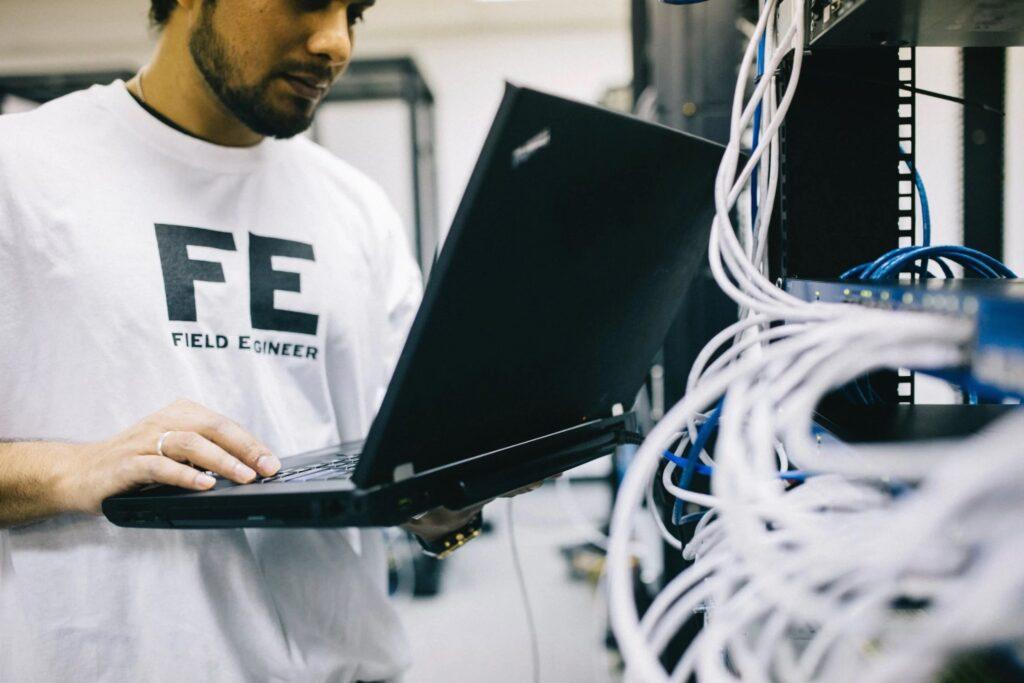Last Updated on February 10, 2023

When a business considers switching to a new MDM for their remote support, they primarily evaluate potential solutions from a technological perspective. The organization’s IT team will compare the MDM’s features vis-a-vis others in the industry, weigh over its specs, and determine how an implementation would work for their business.
While this comprehensive technology review is important, the problem is that most businesses stop there. Upon a successful evaluation, the IT team will roll out the MDM for their organization’s remote support, but often encounter major problems along the way. Though these issues manifest in different ways, they all stem from a single area that the IT team overlooked: the human element.
Switching to remote support is not as easy as flipping on a switch. IT teams must deeply consider how employees will be affected, and plan a strategy for change management that parallels the actual implementation. After all, adopting remote support is a paradigm shift in the way an organization operates: They change from a field-based model to one that is largely office-based. Affected employees are bound to feel anxious, and in some cases, even disgruntled about their lack of say in such a major shift.
The IT teams that fail to create a strategy for change management may experience the following issues.
Support staff may not buy into the changes.
Even in a remote support model, engineers will still need to occasionally go on-site to fix more serious issues. These problems may be too complex to coach a colleague through, or require physical intervention of the device.

Despite the fact that on-site visits should be reserved for all but a handful of cases, engineers may push to go on a regular basis, unaccustomed to remote support. They may have various reasons for this lack of compliance. Some may feel they work better in the field. Others may miss the face-to-face interaction that comes with in-person troubleshooting. Still others may be used to the cadences of field work, enjoying life on the road.
No matter the reason, their adherence to the status quo undermines the organization’s roll-out of the MDM and its program for remote support.
Support staff may insist on their own ways of working.
Some engineers may begrudgingly stay at the office, but stick to how they were handling issues out in the field. They may insist that their way of troubleshooting devices is effective because it worked for so long. They merely need to translate what they did in the field to what they do over remote support, even if they are vastly different contexts.
These engineers may ignore the playbooks, scripts, and processes developed to smoothly handle remote issues, favoring their own personal protocols. This approach is a recipe for chaos. One of the major benefits of remote support is standardization of the service experience. But when support staff act on their own volition, the organization will struggle to measure their success, set goals, and deliver a consistent experience to stakeholders.
Support staff may experience a palpable drop in morale.
One of the most common issues is a drop in morale. This shift in demeanor may apply to all affected employees, no matter their outward behavior. The engineers rebelling against the changes will naturally have low morale. But even the select engineers complying with the new changes may exhibit low morale, despite their best efforts to hide these feelings.

The main reason for low morale is simple: They feel threatened. Whenever a new technology is implemented, especially one that improves productivity as exponentially as MDM does, people will wonder whether their job is at risk. They now have so much more time on their hands, since they are spared the endless commuting from site to site. Surely a higher-up notices this unutilized capacity and will begin enacting layoffs.
When this kind of cloud hangs over an organization’s support staff, they are bound to feel down, which will inevitably be felt by the stakeholders they are meant to support. This is not the image any business should be projecting.

An MDM that facilitates change management
Change management is easier said than done. When evaluating MDMs, IT teams should consider solutions that have features that aid in the change management necessary to successfully to remote support.
One such example is AirDroid, which provides a solution for remote support. Several key features of AirDroid Remote Support will help ease support staff into not only adopting remote support, but becoming fervent believers in this way of working.
The best MDM should not strip down interpersonal connection for its remote support.
Some MDMs build their remote support exclusively around chatting. While chatting has a time and place, such as when other means of communication are not available, it should not be the primary option. When remote support has only chat, it should be no surprise that engineers fail to buy-in. Recalled from the field, these employees are accustomed to personal interactions with stakeholders, and chatting can be impersonal. The on-site customer or colleague may even wonder whether there is a person on the other end, or they are being attended to by a chatbot.

AirDroid, in contrast, builds its remote support around voice. That way, the engineer can feel as if he is there on-site, verbally coaching the colleague or customer through the issue. This voice chat is coupled with augmented reality. Through AR, the engineer can place markers on a physical device, so he can direct the on-site stakeholder. For example, the engineer may want to place a marker on a port on a POS device that a cable should go into. The process of placing markers resembles basic finger-pointing, so there is an additional input that makes the support staff feel as though he is really there.
By facilitating the kind of deep, personal interaction that field-based workers are used to, AirDroid drives adoption and enthusiasm for remote support from the onset.
The best MDM should reward remote support that is scalable.
Most MDMs do not offer any kind of analytics. Other MDMs do have analytics, but the metrics do not have the sophistication necessary for enterprises. This lack of robust analytics is an operational problem. When there is little in the way of tracking, it is easier for support staff to go off the rails: Instead of adopting the new processes that were designed for an organization’s remote support, they are more likely to revert to whatever practices they learned in the field.

With enterprise-grade analytics, an MDM can serve as guardrails, rewarding engineers for following the scalable processes documented in the organization’s scripts and playbooks. On AirDroid, IT teams can track a wide variety of different metrics, including everything from a worker’s log history to their connection status. By offering this level of insight, the data will nudge workers toward the official company frameworks for remote support and away from their own personal practices. When data is made readily available, every engineer will want to hit their productivity targets.
AirDroid mitigates maverick behavior, institutionalizing workers toward the organization’s best practices for remote support as only data can.
The best MDM enables support to show their expertise.
When a new MDM is implemented for remote support, many workers may feel their jobs are at risk. Who can blame them? When companies adopt remote support, the chosen MDM often forces staff to operate exclusively in an advisory capacity because it has no provision for remote control. In these cases, the support staff must coach an on-site stakeholder through a problem, no matter how long it takes. Being able to guide a stakeholder to solve an issue entirely on their own on-site – even if in a less than efficient manner – will make any support staff have doubts about their long-term employability.
While some issues may be assisted by an intermediary, not all should. The best MDMs will give support staff the ability to remote control when needed, so they can take over a device and fix the issue far quicker than could be achieved by coaching a colleague or coworker. Remote control is not only efficient, but self-affirming.
By being able to directly solve the problem rather than just provide advice, engineers get to show how valuable they are to the company: They have a domain expertise that is sometimes too complex to share over a call. This opportunity – like any other in which employees can display their unique talents – boosts morale. It may also encourage engineers to upskill themselves further, perhaps even toward the new technical areas related to remote support, such as data analytics or augmented reality.
Through remote control, AirDroid uplifts the spirit of engineers, who can leverage their skill set to solve pressing technical challenges as only they know how.
Completing the paradigm shift
Adopting an MDM for remote support requires both the actual implementation of the technology as well as the change management of affected employees. In an ideal case, these should not be two separate endeavors. The best MDMs will make it easier for engineers to transition from on-site to remote support.
Such is the case with AirDroid, which has a breadth of features that will aid in change management. Voice chat and augmented reality will make engineers feel they are back in the field, providing personalized support to their stakeholders. Data analytics will enhance compliance with the new processes and protocols for remote support, given that engineers will want to demonstrate their productivity. Finally, remote control will improve the morale of engineers, owing to the fact it enables them to directly solve issues with their expertise when needed, rather than only standby and guide.
IT teams should keep features like these in mind when selecting an MDM: The best solution will be purposefully designed to assist organizations in switching seamlessly from on-site to remote support. These solutions accelerate this paradigm shift, so that organizations can quickly arrive at the most efficient way of serving their stakeholders.

Leave a Reply